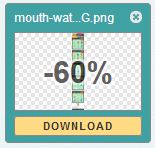Blogging is a piece of cake when you have the recipe. Here are 31 tips to make your blog a mouth-watering treat that will keep readers coming back for more.
I love to blog. In fact, I just love to write. And writing is a huge part of blogging. It’s the meat of the meal. But it’s not the only thing that makes or breaks your blog posts.
There are five main aspects to your blog posts that are all equally important. Let’s take a quick look at each one:
- Keep reading below the InfoGraphic.
- Click the Infographic to see it enlarged.
Tap or click here for permission to republish this Infographic.
The idea is the most important. If you get the idea right, you can be forgiven for typos and even awkward language.
Your best bet is to pick a proven topic, one you know your audience loves. But present it in a fresh, new way they’ve never seen before. You can’t miss if the topic is audience-focused, as long as you don’t repeat the same lines they’ve grown weary of hearing from other bloggers.
List posts work best. Time-tested, they make a blog successful. But telling a story can also be successful, because you can pull readers deeper into your posts. Like opening up a post with a Jenna Coleman story. Or writing a parable based on Julia Child.
Whenever possible, support your claims with data.
The Headline is critical. Some people spend as much time writing an 8-word headline as they spend on the 1,000 other words in the article.
The key to a successful headline is to make people feel there will be value reading the article. Providing a specific benefit is therefore a top priority. The title of this post tells you exactly what you’ll learn.
It fully explains the topic.
It is specific, right down to the number of tips.
It does not include keywords. Sorry, but I’m writing this for you, not for Google. But if rankings are important to you, so are keywords.
In the InfoGraphic, we suggest some words that draw in readers. You can’t include them all in your title, and they are not the only successful title words. So try and include at least one, and don’t be shy to use those words in other places that can draw people in, such as:
- social media sharing
- the lead-in paragraph
- images with text on them
The writing is the meat of your blog post. At very least, use proper spelling and grammar.
Write in plain English, so that people can actually understand what you have to say without having to work at it. Use short sentences and paragraphs. Use short and common words. Speak to the reader in the active voice:
- Like this: Write for the reader.
- Not like this: Blogs should be written for the reader.
You don’t need to write 3,000 words, but write enough to cover the subject. If it takes more than seven or eight minutes to read, maybe you should split the post into two or write an eBook instead.
The image is what people see. Restaurants know how to get you to order preferred dishes by making them look yummy on their menus.
The image should be original. No cringe-worthy stock photos, please.
The right images will make your blog look yummy in social media and when readers land on your page. The image should show what the post is about, which usually means that there should be text in the image. It should be able to stand on its own in social media (so that people share it). People are drawn to faces, so try to include them in your image(s).
An Infographic like the one above, courtesy of Venngage Infographic Maker, is a great example of an original image that stands on its own and includes text.
Optimize for speed, so as not to slow your page’s load time. I use Optimizilla to reduce the size of this Infographic by 60%. That’s better than most.
The design counts, too. This is how the meal looks when laid out on your table. If it’s too cluttered, it looks messy.
Design is what people see before they read it. Make your blog’s design looks appetizing.
Click To Tweet
Leave lots of white space.
You can do this by putting some information into bullet lists. You can break up imposing blocks of text with shorter paragraphs and frequent sub-headings. These things also help make your post easier to read.
Images are not just for social media. Multiple images, hopefully useful ones, also break up the text.
Adding a few tweetable quotes can help, too. Some people use call-outs, with the same effect (except that call-outs don’t encourage sharing).
Ready to head to the kitchen to cook up a mouth-watering blog post? See how many of these tips you can use, and let me know if you create a post with all of them.

